
views
X
Research source
- Fill the bottle up to the dotted fill line with slightly warm water. Always use distilled or previously boiled water. Tap water isn't safe to use in a sinus rinse.
- Add the contents of the mixture packet to the bottle, then shake the bottle to mix everything.
- Bending forward over a sink, bring the bottle nozzle up to one of your nostrils and squeeze the bottle gently. Once half the water is gone, repeat with your other nostril.
Preparing the Rinse
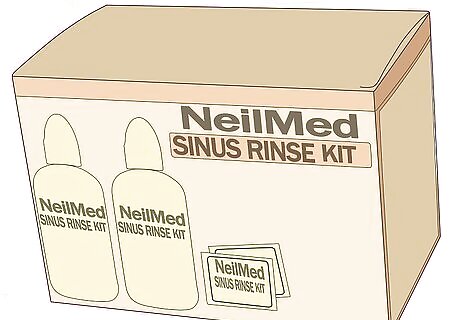
Obtain a Neilmed Sinus Rinse kit. You can get the kit from your local pharmacy or NeilMed's website. NeilMed offers three types of kits: The Sinus Rinse Starter Kit includes an 8-ounce (240ml) squeeze bottle and 5 packets of premixed rinse solution. The Sinus Rinse Complete Kit includes an 8-ounce (240 ml) squeeze bottle and 50 packets of premixed rinse solution. The Sinus Rinse Kids Starter Kit includes a 4-ounce (120ml) squeeze bottle and 30 packets of premixed rinse solution, specially formulated for children.
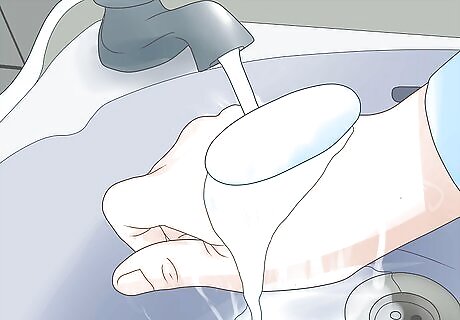
Wash your hands to avoid contaminating the product. The CDC recommends that you use warm water and soap. Scrub your hands for about 20 seconds, or about the amount of time it takes to sing the "Happy Birthday" song twice.
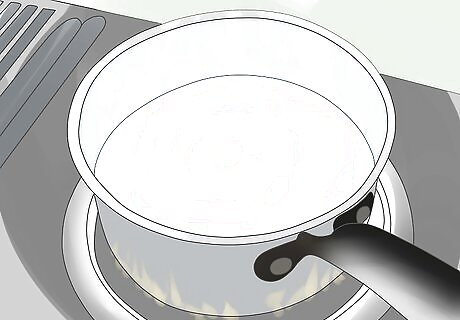
Warm up distilled or previously boiled water until it is slightly warm. You can warm water up on the stove or in the microwave in a clean safe container. You should warm the water for 5 seconds at a time if using a microwave. It should be at body-temperature, or "lukewarm." Do not use water that is not micro-filtered, boiled, or distilled to rinse your sinuses. Tap water may contain microorganisms that could cause illness.
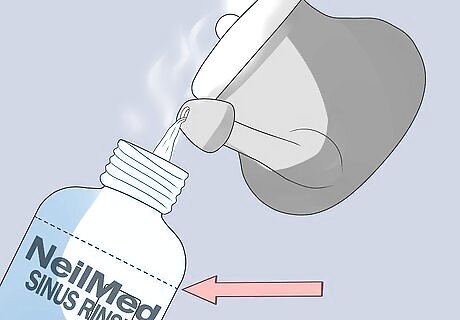
Fill the bottle with the designated amount of water. The correct amount of water should be 8 oz. (240 ml). Your water line should be at the dotted fill line of the bottle. If you are using a Kids Sinus Rinse kit, you will use 4 oz. (120 ml) of water.

Cut the corner of a mixture packet that came with the kit. Don't use your teeth to tear the packet.
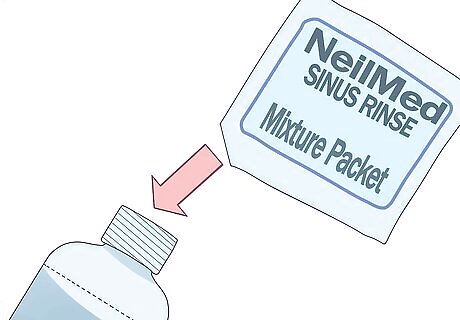
Pour the contents into the bottle and tighten the cap. Make sure you screw the cap on tightly so it doesn't fall off in the next step.
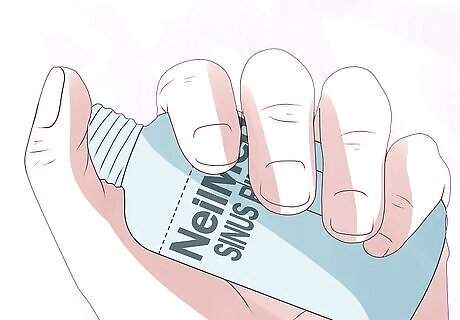
Place one finger over the tip and shake the bottle gently. This will allow the saline mixture to dissolve into the water.
Administering the Rinse
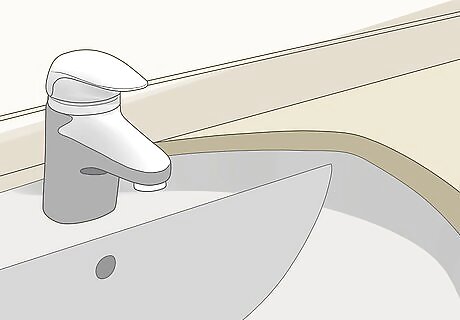
Bend forward over a sink to your comfort level. Tilt your head down and breathe through your mouth, not your nose.
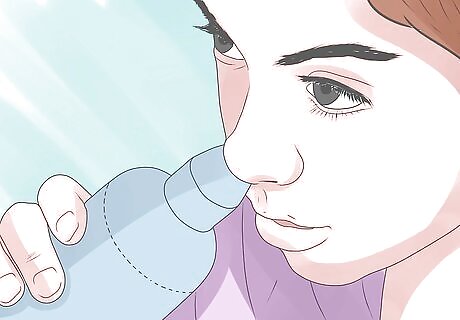
Put the nozzle tip snugly against one of your nostrils. Keep your mouth open, because the mixture can drain from your mouth as well as the opposite nostril. This also reduces pressure on the ears.

Squeeze the bottle gently to force the liquid into your nasal passages. Squeeze until the solution begins to drain from the opposite nostril.
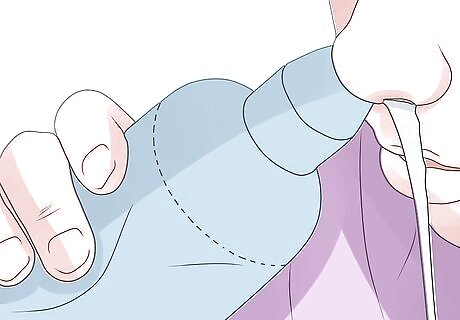
Squeeze the bottle until 1/4-to-1/2 (60-to-120 ml) is used in one nostril. You can use up to half the solution per nostril, but you should always use at least one-quarter of the solution for each.
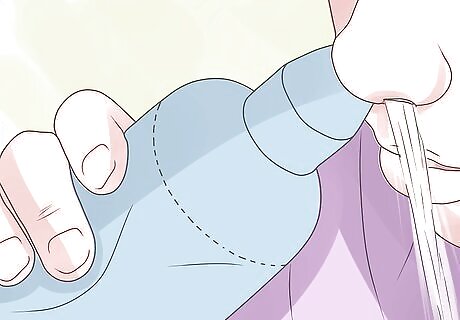
Blow your nose without pinching it completely shut. Pinching your nose entirely shut would put too much pressure on your eardrums. Then, try sniffing in the remaining solution to help clear out the nasopharyngeal area (at the back of your nasal passages). Tilt your head to the opposite side to expel any remaining solution from your sinuses or nasal passage. Spit out any solution that reaches the back of your throat.
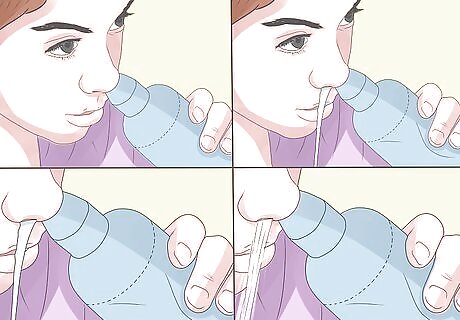
Repeat the last five steps for the other nostril. Use the rest of the solution.
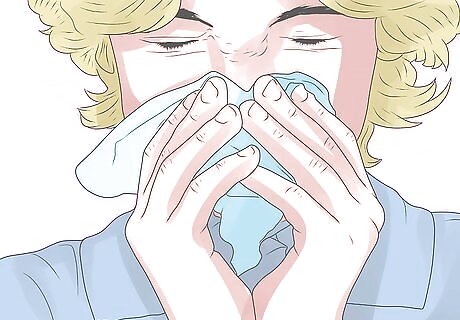
Discard the tiny amount of solution left over. Never store leftover solution. It can breed bacteria.
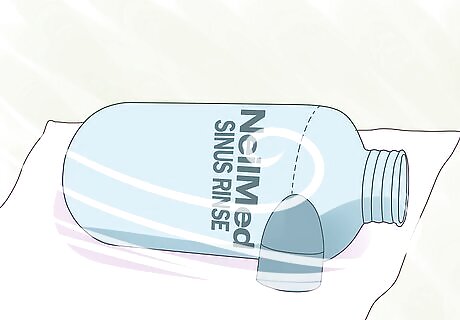
Disinfect the sinus rinse bottle. Rinse the cap, tube, and rinse bottle with water. Then, add a drop of dishwashing detergent to the bottle and fill it with water. Put the cap on and shake the bottle well. Squeeze the soapy water through the cap. Use a bottle brush to scrub the bottle, cap, and tube. Rinse thoroughly with clean water. Air dry the bottle and nozzle on a clean towel or glass plate.















Comments
0 comment